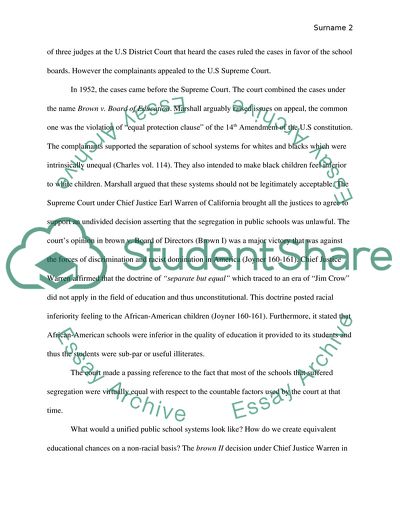Cite this document
(Brown Vs. Board of Education Research Paper Example | Topics and Well Written Essays - 1500 words, n.d.)
Brown Vs. Board of Education Research Paper Example | Topics and Well Written Essays - 1500 words. Retrieved from https://studentshare.org/education/1869505-brown-vs-board-of-education
Brown Vs. Board of Education Research Paper Example | Topics and Well Written Essays - 1500 words. Retrieved from https://studentshare.org/education/1869505-brown-vs-board-of-education
(Brown Vs. Board of Education Research Paper Example | Topics and Well Written Essays - 1500 Words)
Brown Vs. Board of Education Research Paper Example | Topics and Well Written Essays - 1500 Words. https://studentshare.org/education/1869505-brown-vs-board-of-education.
Brown Vs. Board of Education Research Paper Example | Topics and Well Written Essays - 1500 Words. https://studentshare.org/education/1869505-brown-vs-board-of-education.
“Brown Vs. Board of Education Research Paper Example | Topics and Well Written Essays - 1500 Words”, n.d. https://studentshare.org/education/1869505-brown-vs-board-of-education.


